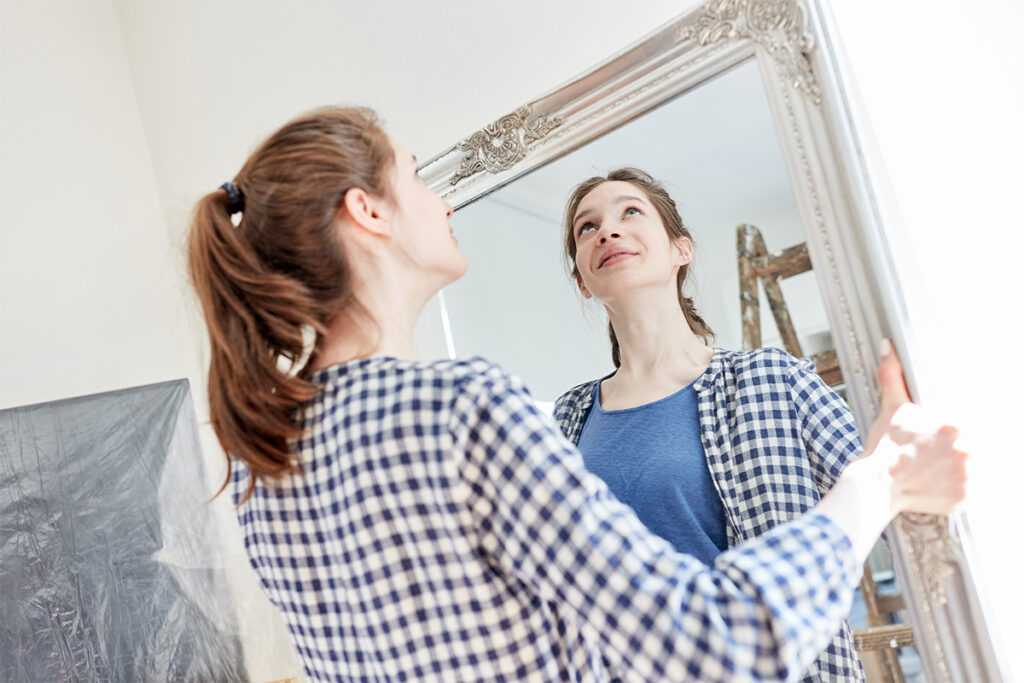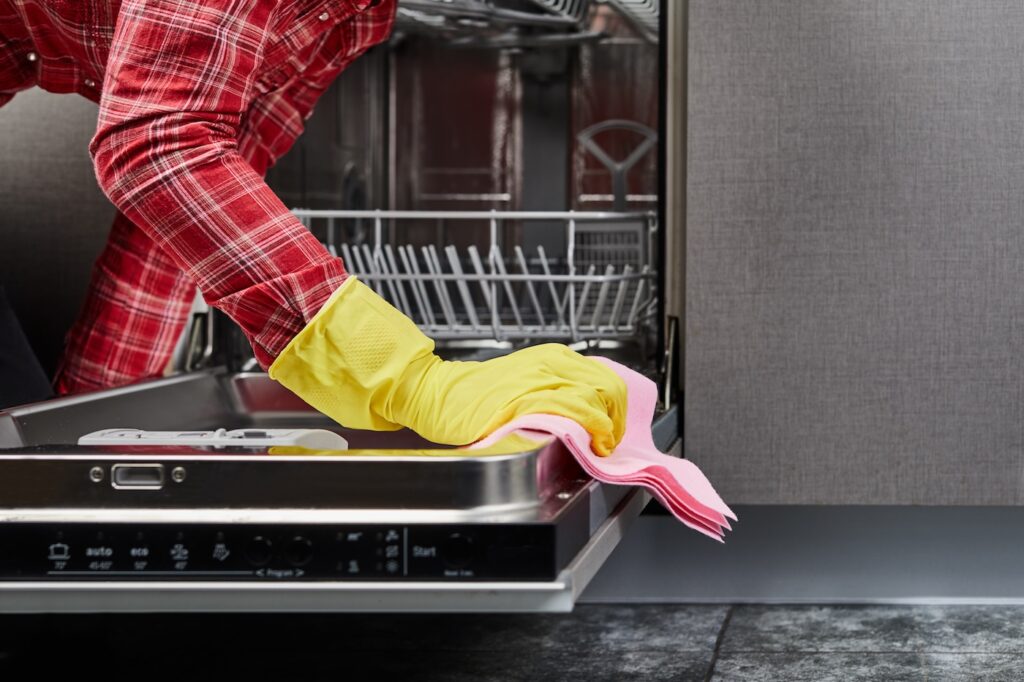Preparation And Safety Before Hanging A Bathroom Mirror
Before jumping into how to hang your mirror, here are some key things to consider in order to stay safe:
- Utilize wall studs to ensure your mirror is securely fastened to the wall
- Get assistance with mounting your mirror if the mirror is large and heavy
- Be aware of seismic conditions in your area and take precautions to ensure your mirror isn’t damaged during an earthquake
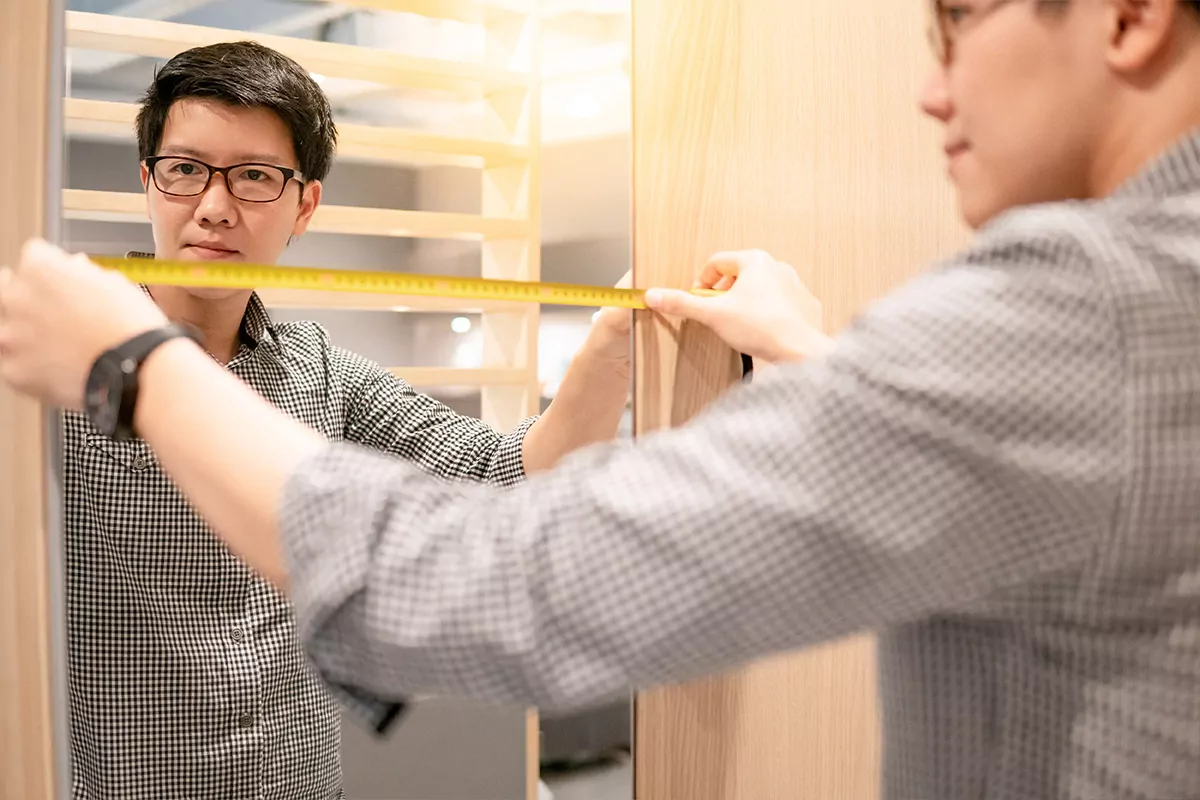
Tips For Hanging Your Bathroom Mirror
There are a lot of things to keep in mind when hanging a mirror. If you want to hang a mirror in your bathroom, consider the following:
- Heavy mirrors can be delicate, but also are capable of damaging other parts of your home. Take care when hanging a mirror, especially over something easily damaged, link a sink.
- Be sure to weigh your mirror before hanging it or check its tag for a weight. Knowing the weight of your mirror will help prevent it from falling and enable you to use the right hanging hardware.
- You’ll need to have the right tools to hang a bathroom mirror. You may need wall hooks, anchors or clips to secure your mirror firmly to the wall. Assess the shape and specs of your mirror before hanging to ensure it gets attached securely.
- Measure the space you’ll be hanging your mirror in, as well as the mirror itself. This will help prevent any issues with fitting the mirror into its desired space.
- Consider the type of wall you’re hanging the mirror on. Different homes can have different wall types. A key part of learning how to mount is to know the differences, which can vary depending on the house’s style and when it was built. The main types of walls are:
- Drywall. This is mounted on vertical studs, which are spaced 16–24 inches apart and made of wood or metal.
- Lathe and plaster. Older houses sometimes have this type of wall, which has horizontal wooden slats nailed to studs and covered with hardened plaster. This can create dust when you drill into it.
- Concrete. Sometimes, this type of wall is hidden underneath wallpaper or paint. To check, knock on the wall first. If it’s solid and hurts your knuckles, it’s most likely concrete.
- Brick and masonry. Brick is relatively recognizable and usually will be exposed. While it’s rare to have brick behind drywall, it sometimes happens. If this is the case, your pilot hole will tell you within seconds.
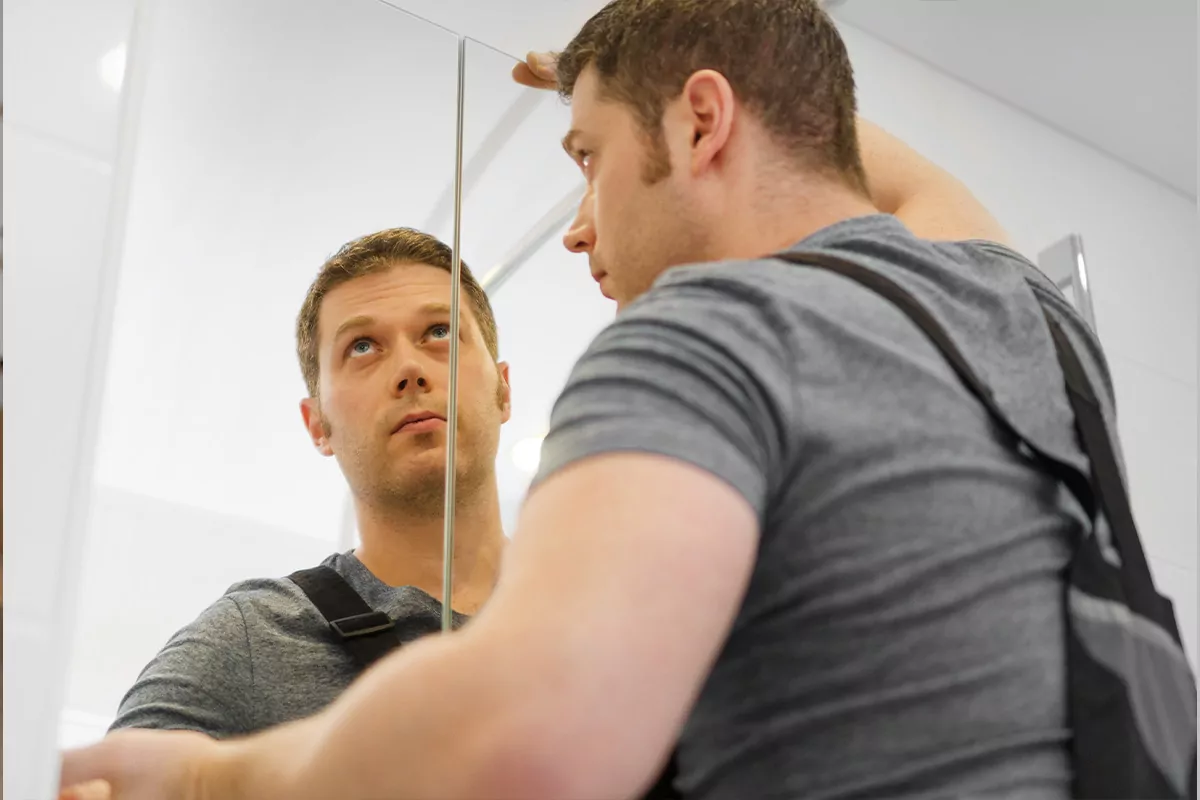
Pro tip: Different surfaces will require different tools. Be sure to use appropriate drills and hammers when working with different wall types.
How To Mount a Framed Bathroom Mirror
Framed bathroom mirrors can be large or small and often look similar to a picture frame. Note that frames can increase a mirror’s weight, so be sure to consider this when identifying your wall type, choosing your hanger brackets, and determining if you’re hanging them directly on drywall vs. studs. (Many framed mirrors come with the appropriate brackets, which can sometimes save you time!) To hang your framed bathroom mirror:
- Determine your wall type. As mentioned above, this will matter as it relates to the tools, brackets, wall hooks, or anchors you need to use. Typically, you’ll mount a wall hook and hang the mirror on this using a hanger bracket or wire.
- Check the frame for a hanger bracket. Many frames will have a centered hanger bracket on the top back side of the frame, which allows the mirror to rest comfortably on a nailed-in wall hook.
- Decide if you need to use a hanging wire. If your frame doesn’t have an attached bracket, connect two side brackets, and run a wire between them. Make sure that when the wire is pulled tight vertically, it doesn’t go higher than the top of the frame.
- Mark the wall. Hold your mirror exactly where you want it and mark the exact position of the top and bottom of the mirror with a pencil or marker.
- Measure the vertical space above the hook or wire. Measure the vertical space between the hook or wire and the frame’s top. You’ll use this to mark a spot below your initial wall mark, where you’ll hang your wall hook.
- Hang your wall hooks. Use the above measurement, mark where you want your wall hooks, and nail or drill them into the wall.
- Hang the mirror on the hook. Make sure it’s level by adjusting the angle as needed.
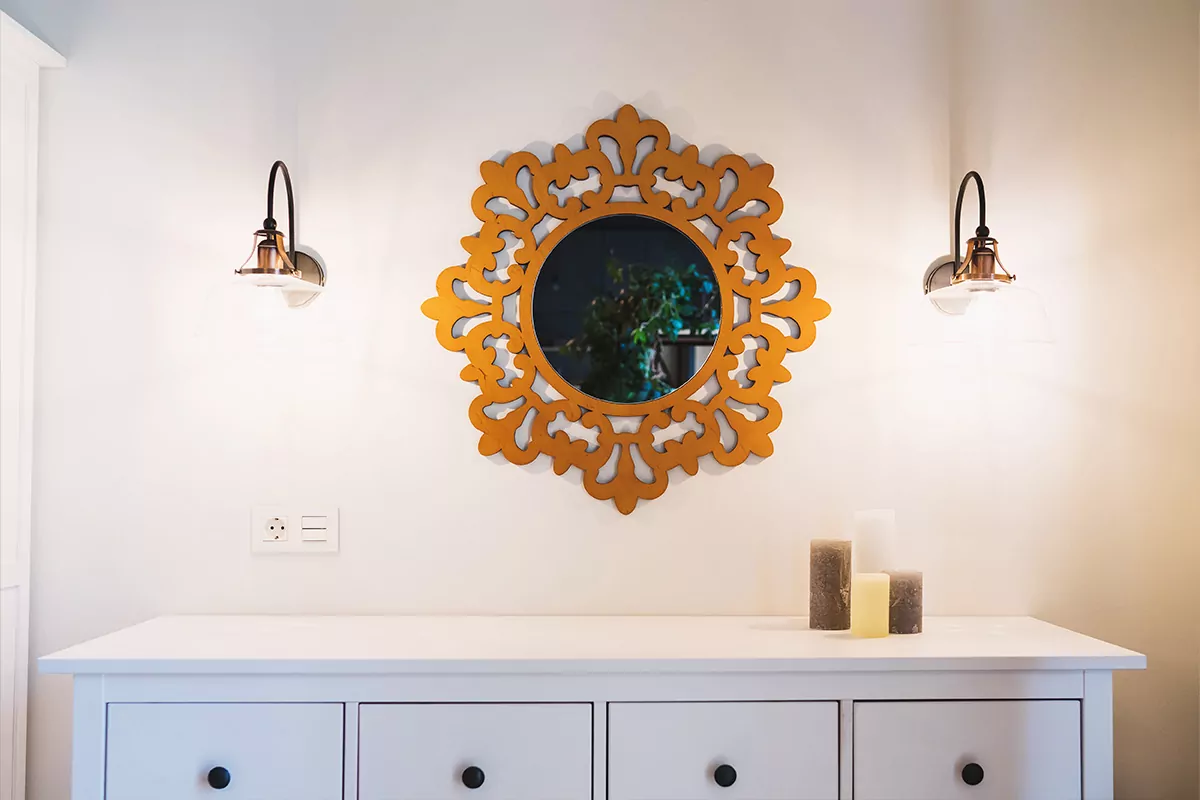
How To Mount a Frameless Bathroom Mirror
Mounting a frameless bathroom mirror can be a bit trickier than mounting a framed mirror. Because there’s no surface that takes nails or screws, you’ll have to use small mounting clips or glass/mirror adhesive. To mount a frameless bathroom mirror:
- Decide between mounting clips or adhesive. Mounting clips can be nailed or screwed into wall studs, which makes mirror placement and removal easy. Adhesive glues the mirror to the wall, which can make removal difficult.
- After you’ve decided to use clips or adhesive, be sure to mark where the top and bottom of your mirror will sit with a pencil.
- If you’re using clips: Mount them to the wall, and attach the mirror. The mirror will rest inside the clips. While you’ll be able to see the clips, you’ll also have a thin layer of space behind the mirror, which can help prevent mold buildup.
- If you’re using adhesive: Apply the adhesive to the back of the mirror or to the wall. Follow the manufacturer’s instructions carefully, and make sure your mirror is perfectly level and perfectly placed. While adhesives set within 15-30 minutes, they can take 24-48 to fully cure.
Pro tip: Mirrors stuck to a wall with adhesive can be tough to remove. In the event you remodel or need to take your mirror off the wall, you may need to break it off piece by piece. If there’s any space behind the mirror, you can also try running a piano wire down the back of it to “saw” it off the wall.
Mounting a Mirror on Tile
A tile backsplash behind your bathroom sink can look amazing, but how do you hang a mirror on it without gluing it or breaking the tile? It’s actually very doable—just be careful while taking the following steps.
- Get masonry drywall anchors. Since you’ll be drilling through both tile and drywall, you’ll need these. Before using them, make sure they’ll support the weight of your mirror.
- Decide between a masonry or dremel drill bit. You’ll need these to drill a hole through the tile. If you use a dremel bit, you may have to size them up as you go so they effectively clear a hole for your wall anchor.
- Use painter’s tape to mark the spot with an X. Painters tape (or masking tape) doesn’t just mark the spot where you’ll drill. It’ll give your drill’s masonry bit a soft place to “bite” into the tile without scarring or breaking it.
- Drill slowly while using a spray bottle to cool the area. Spraying cold water onto the mounting area while you drill will help prevent the drill bit and tile from getting too hot. Go slowly, keep the area cool, and make sure your drill bit is the right size to fit your anchors.
- Lightly hammer the anchor into the wall. Using the hammer or rubber mallet, lightly tap the anchor into the drilled hole.
- Screw in the screw that came with the anchor. Once this is done, you can hang your mirror or attach a hanging hook. You’re all set!

It’s easy to figure out how to hang a bathroom mirror, but it can definitely be a nuanced process. Once your mirror is up, however, you can step back, gaze into it, and be proud of a job well done.

